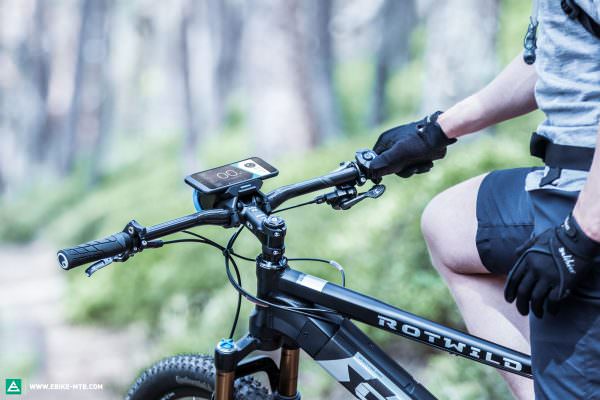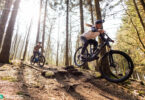8. Navigation on the go
And finally you’re off. No matter how you planned your tour one thing is clear: you must be able to find your way around. If you have planned the tour with a book or a paper map you’ll probably bring them with you and consult them while riding. Most of these routes are based on existing signage and can therefore be followed without the need to continuously check the map or study the route.
However, since we live in the digital era it would be a little dim not to take advantage of GPS devices, smartphones and apps. And don’t worry: your mobile-phone or GPS battery will most likely last longer than the battery on your bike. If you’re on tour with two bike-batteries and your device runs out of power most displays will allow you to charge your phone or GPS device directly from the main battery.
Your mobile-phone or GPS battery will most likely last longer than the battery on your bike

Smartphone
Your smartphone is also your cheapest navigation option — and you will always carry one with you. Power is usually not an issue when riding on eMTBs and apart from that most navigation/map-apps for smartphones are always up to date. Apps like Komoot, Strava, GPS-Tour.info, GPSies, Gaia GPS or ViewRanger offer the same features as a traditional GPS bike-device but at a lower price – some of them are even free. These apps include a variety of open-source maps and often feature a download option for offline use. This means you won’t necessarily need data connection to navigate. Active route guidance such as arrow- or voice-navigation are not as common on cycling devices as they are on car sat-navs which means you’ll have to keep an eye on your screen. If you don’t want to reach for your mobile in your pockets every five minutes you should get yourself a sturdy handlebar holder.


GPS-cycling computer
If you like a more comfortable navigation solution you can invest in an additional GPS device. Almost all of these connect straight to your smartphone and can be used on their own. They are usually very easy to read and take up less space on the handlebars than a smartphone — and most importantly they allow you to store your smartphone in a safe pocket and save on battery. Navigation with GPS cycle-computers is quite simple. Pair your device with your smartphone or computer, load the GPS track, select your map (if applicable), attach the device to the handlebar, press Start and off you go! Depending on the device and price range you’ll either be guided by arrows and/or voice announcements or you will have to look at the screen and check the route before a turnoff. And the drawbacks? GPS devices can sometimes be a bit tricky to operate, the software and hardware can be slow and on top of that you’ll have one more device to take care of. You can find a test of different current devices in our sister magazine GRAN FONDO.
COBI.bike
At the last EUROBIKE edition Bosch and COBI.bike announced their partnership. That’s brilliant news for all touring aficionados and means you’ll soon be able to install a COBI.bike system on any central Bosch display-mount . The system includes a mobile-phone holder (optionally with headlight and remote control) and a very complete app which includes a navigation function. The app displays all the data from the Bosch drive in real time and works as a comprehensive on-board computer. The map material is based on OpenStreetMap which users can link to their Komoot account for better route planning. This is currently the most modern solution — at least for eMTBs with a Bosch motor.










